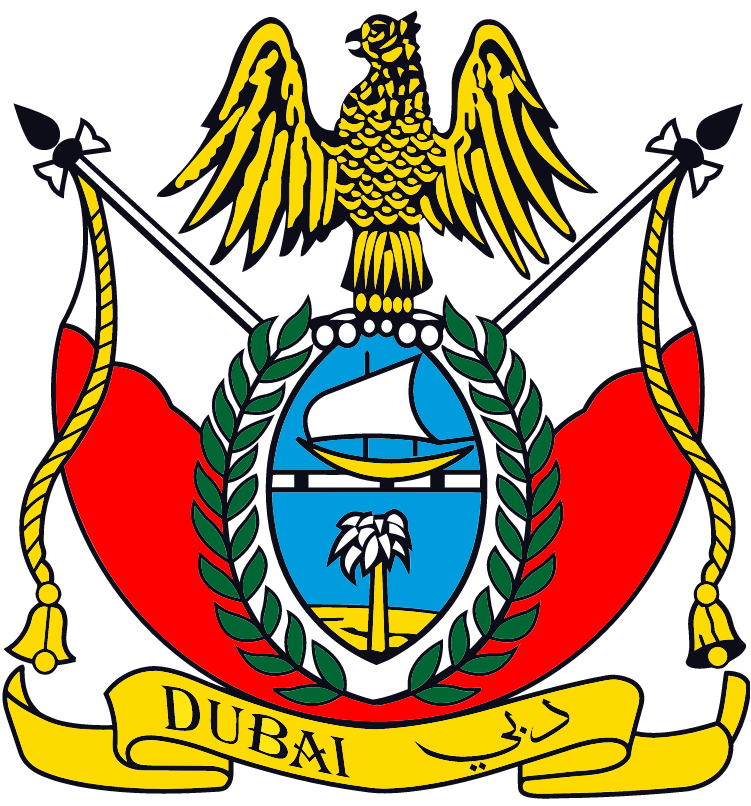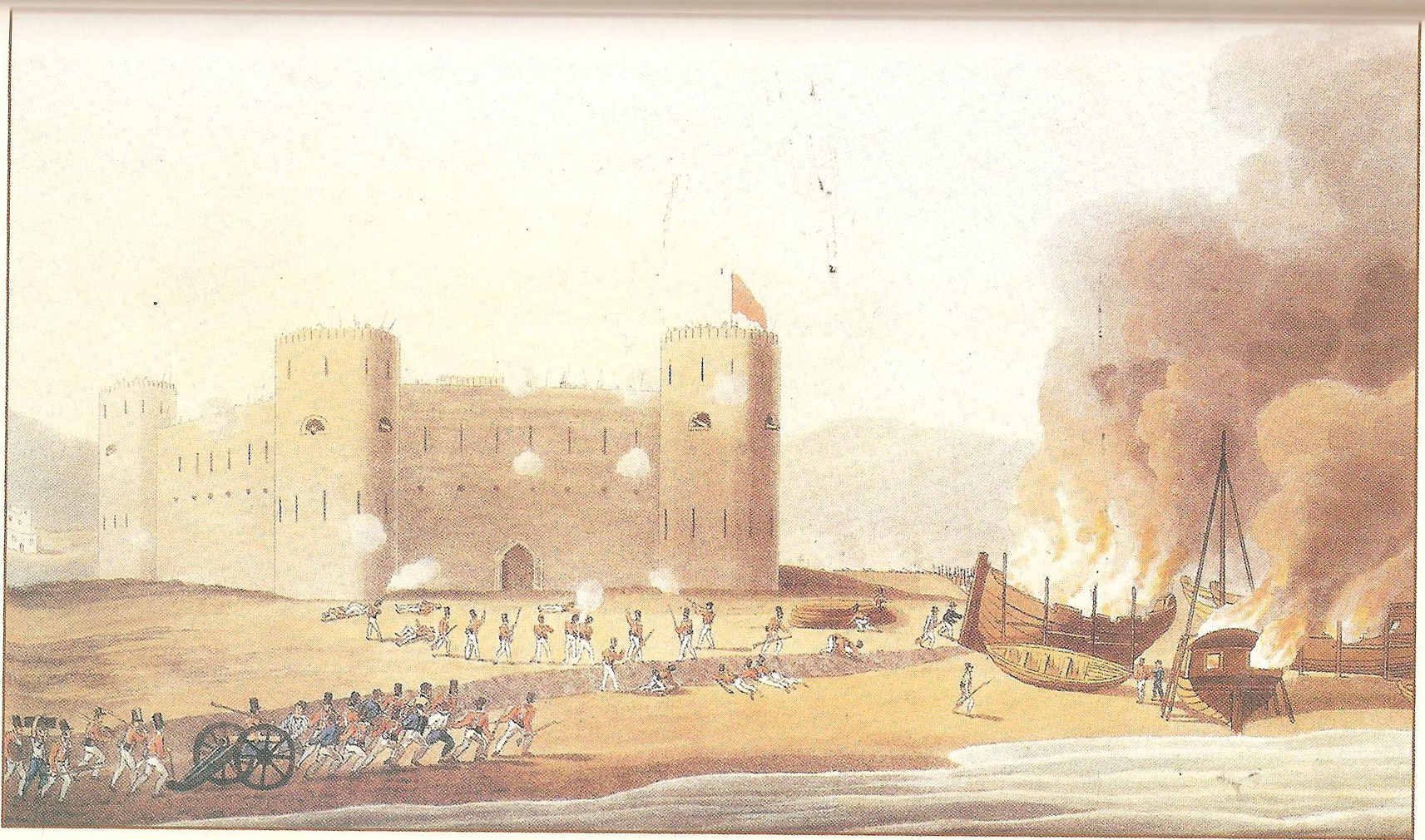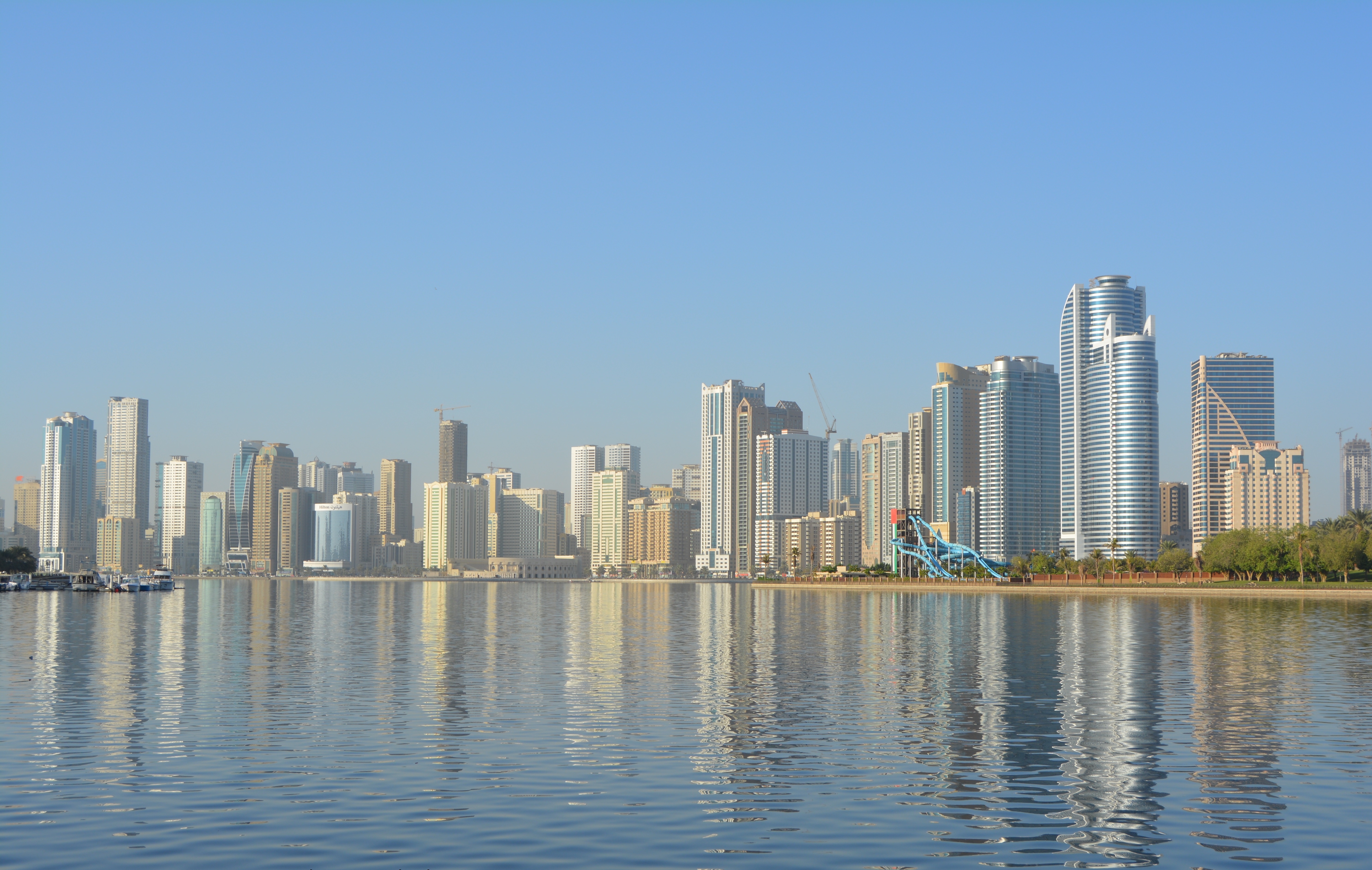|
Ruler Of Dubai
The Ruler of Dubai is the position of the hereditary monarch and head of government of the Emirate of Dubai, one of the six ruling families of the UAE. The Ruler is also considered the head of the House of Maktoum, the royal family of Dubai. After the unification of the Emirate of Dubai within the United Arab Emirates, the Ruler of Dubai nominally assumes the position of Vice President of the United Arab Emirates and Prime Minister of the United Arab Emirates and sits at the seat reserved for Dubai at the Federal Supreme Council. History In 1833, a migrating offshoot of the ruling Bani Yas tribe of Abu Dhabi settled to the small fishing village of Bur Dubai where Maktoum bin Butti bin Suhail become the sole Ruler of Dubai by 1836, establishing the Al-Maktoum dynasty. The relatively small Dubai relied on fishing, pearling, and foreign trade between the much larger Al Nahyan dynasty in Abu Dhabi and the Al Qasimi dynasty of Sharjah and establishing good relations with British f ... [...More Info...] [...Related Items...] OR: [Wikipedia] [Google] [Baidu] |
Emirate Of Dubai
The Emirate of Dubai ( ar, إمارة دبيّ; pr. ) is one of the seven emirates of the United Arab Emirates. It is the most populous emirate of the United Arab Emirates, UAE. The capital of the emirate is the eponymous city, Dubai. Geography The city of Dubai is located on the coast of the Persian Gulf, while the Emirate stretches inland and is bordered to the south by the emirate of Abu Dhabi, to the northeast by the emirate of Sharjah, to the southeast by the country of Oman, to the east by the emirate of Ajman, and to the north by the emirate of Ras Al Khaimah. History In the early 19th century, the coastal township of Dubai was located within the territorial lands of the Bani Yas tribe, however Dubai was also on the borderlands near the control of the powerful Al Qasimi clan. This caused both groups to assert authority over the town. In the 19th century, pearls were the main commodity of the region, with buyers from Mumbai, commerce peaked in 1897. In 1901, Maktoum b ... [...More Info...] [...Related Items...] OR: [Wikipedia] [Google] [Baidu] |
Al-Maktoum
The House of Maktoum ( ar, آل مكتوم ') is the ruling royal family of the Emirate of Dubai, and one of the six ruling families of the United Arab Emirates. The family is a branch of the Bani Yas clan (a lineage the family shares with the Al Nahyan dynasty of Abu Dhabi), which is a branch of the Al Bu Falasah section of the Bani Yas, a tribal federation that was the dominant power through the region that now forms the United Arab Emirates. History In 1833, about 800 members of the Bani Yas tribe, under the leadership of Maktoum bin Butti, took over the emirate of Dubai and established the Al Maktoum dynasty in the emirate. The Al Maktoum dynasty has ruled Dubai since 1833. Within the federation of the United Arab Emirates, a member of the Dubai ruling family is also de facto always the country's Vice President, Prime Minister and Defence Minister. Family tree The following Al Maktoum family members have ruled Dubai: * 9 July 1833 – 1836 Sheikh Obeid bin Said bi ... [...More Info...] [...Related Items...] OR: [Wikipedia] [Google] [Baidu] |
Dubai Government
The Government of Dubai ( ar, حكومة دبي) is the subnational authority that governs the Emirate of Dubai, one of the seven constituent monarchies which make up the United Arab Emirates. The executive authority and head of the government is the Ruler of Dubai, Sheikh Mohammed bin Rashid Al Maktoum. The Ruler of Dubai appoints the Dubai Executive Council, which is led by the Crown prince of Dubai and is responsible for the day-to-day management of Dubai Government agencies such as the Dubai Municipality and numerous other governing entities. History Since 1830, the Emirate of Dubai had a semi-autonomous government led by the Ruler of Dubai, who would delegate responsibilities of managing the affairs of the emirate to representatives in an informal government. Prior to the unification of the United Arab Emirates, Dubai had already started issuing local laws as part of the Trucial States on matters of taxation and trade, allowing the emirate to attract foreign trade and develop ... [...More Info...] [...Related Items...] OR: [Wikipedia] [Google] [Baidu] |
Maktoum Bin Rashid Al Maktoum
Sheikh Maktoum bin Rashid Al Maktoum ( ar, مكتوم بن راشد آل مكتوم, Maktūm bin Rāshid Āl Maktūm; 15 August 1943 – 4 January 2006) was an Emirati politician who served as the vice president and prime minister of the United Arab Emirates (UAE) as well as the ruler of Dubai. He was initially prime minister of the UAE from 1971 to 1979. He later served as the country's vice president and prime minister, and as ruler of Dubai, from 1990 to 2006. Maktoum was well regarded with being one of the key people in creating the UAE in 1971. He started the project of Dubai when he suddenly suffered a heart attack and was succeeded by his brother Mohammed, the current ruler of Dubai. Early life He was born in 1943 in Al Shindagha, Dubai to the Al Maktoum family of the Al Bu Falasah tribe. Political career His father Sheikh Rashid bin Saeed Al Maktoum became the Ruler of Dubai upon the death of his own father, Sheikh Saeed bin Maktoum bin Hasher Al Maktoum (Saeed II ... [...More Info...] [...Related Items...] OR: [Wikipedia] [Google] [Baidu] |
House Of Al Falasi
The House of Al Falasi ( ar, بيت الفلاسي) is both a name of a tribe and a name of its Al Maktoum branch (ruling family of Dubai). History The Al Maktoum family descends from the Al Bu Falasah (now known as Al-Falasi) section of the Bani Yas, a tribal federation that has been the dominant power throughout most of what is now the United Arab Emirates. In 1833, a large group of the Al Bu Falasah section of the Bani Yas seceded to Dubai during the pearling season, under the leadership of Maktoum bin Butti bin Sohal, escaping the violence of Sheikh Khalifah of Abu Dhabi. Dubai was readily given up to them by its wali. The following autumn, the bulk of their relatives joined them and virtually all of the Al Bu Falasah were domiciled in Dubai from then on. Sheikh Maktoum bin Hasher Al Maktoum (Ruler from 1894 to 1906) convinced merchants from Lingeh in Iran to stay in the city by assuring zero taxation. A more modern cosmopolitan city as well as a business friendly orientati ... [...More Info...] [...Related Items...] OR: [Wikipedia] [Google] [Baidu] |
UAE Constitution
The Constitution of the United Arab Emirates ( ar, دستور دولة الامارات العربية المتحدة, ) provides a legal and political framework for the operation of the United Arab Emirates (UAE) as a federation of seven emirates. The Constitution came into effect on 2 December 1971 and was permanently accepted in May 1996. Authored by Adi Bitar, a forming judge and legal advisor, the Constitution is written in 10 parts and has 152 Articles. The United Arab Emirates celebrates the formation of the Union (and acceptance of the federal constitution) as National Day. History The Historically independent kingdoms, the modern emirates that constitute the United Arab Emirates and the modern kingdoms of Qatar and Bahrain entered into a treaty with the United Kingdom in 1853 and agreed to a Perpetual Maritime Truce with the UK; the kingdoms were collectively referred to as the ''Trucial States'' or as ''Trucial Oman''. Disputes between the states were often arbitrat ... [...More Info...] [...Related Items...] OR: [Wikipedia] [Google] [Baidu] |
Government Of Dubai
The Government of Dubai ( ar, حكومة دبي) is the subnational authority that governs the Emirate of Dubai, one of the seven constituent monarchies which make up the United Arab Emirates. The executive authority and head of the government is the Ruler of Dubai, Sheikh Mohammed bin Rashid Al Maktoum. The Ruler of Dubai appoints the Dubai Executive Council, which is led by the Crown prince of Dubai and is responsible for the day-to-day management of Dubai Government agencies such as the Dubai Municipality and numerous other governing entities. History Since 1830, the Emirate of Dubai had a semi-autonomous government led by the Ruler of Dubai, who would delegate responsibilities of managing the affairs of the emirate to representatives in an informal government. Prior to the unification of the United Arab Emirates, Dubai had already started issuing local laws as part of the Trucial States on matters of taxation and trade, allowing the emirate to attract foreign trade and develop ... [...More Info...] [...Related Items...] OR: [Wikipedia] [Google] [Baidu] |
Head Of State
A head of state (or chief of state) is the public persona who officially embodies a state Foakes, pp. 110–11 " he head of statebeing an embodiment of the State itself or representatitve of its international persona." in its unity and legitimacy. Depending on the country's form of government and separation of powers, the head of state may be a ceremonial figurehead or concurrently the head of government and more (such as the president of the United States, who is also commander-in-chief of the United States Armed Forces). In a parliamentary system, such as the United Kingdom or India, the head of state usually has mostly ceremonial powers, with a separate head of government. However, in some parliamentary systems, like South Africa, there is an executive president that is both head of state and head of government. Likewise, in some parliamentary systems the head of state is not the head of government, but still has significant powers, for example Morocco. In contrast, ... [...More Info...] [...Related Items...] OR: [Wikipedia] [Google] [Baidu] |
Rashid Bin Saeed Al Maktoum
Sheikh Rashid bin Saeed Al Maktoum ( ar, ٱلـشَّـيْـخ رَاشِـد بِـن سَـعِـيْـد آل مَـكْـتُـوْم, Ash-Shaykh Rāshid bin Sa`īd Āl Maktūm; 11 June 1912 – 7 October 1990) was the vice president and second prime minister of the United Arab Emirates and ruler of Dubai. He ruled Dubai for 32 years from 1958 until his death in 1990. Development of Dubai Sheikh Rashid was responsible for the transformation of Dubai from a small cluster of settlements near the Dubai Creek to a modern port city and commercial hub. A quote commonly attributed to Sheikh Rashid reflected his concern that Dubai's oil, which was discovered in 1966 and which began production in 1969, would run out within a few generations. "My grandfather rode a camel, my father rode a camel, I drive a Mercedes, my son drives a Land Rover, his son will drive a Land Rover, but his son will ride a camel",While the following quote is commonly attributed to Sheikh Rashid, it i ... [...More Info...] [...Related Items...] OR: [Wikipedia] [Google] [Baidu] |
Trucial States
The Trucial States ( '), also known as the Trucial Coast ( '), the Trucial Sheikhdoms ( '), Trucial Arabia or Trucial Oman, was the name the British government gave to a group of tribal confederations in southeastern Arabia whose leaders had signed protective treaties, or truces, with the United Kingdom between 1820 and 1892. The Trucial States remained an informal British protectorate until the treaties were revoked on 1 December 1971. The following day, six of the sheikhdoms—Dubai, Abu Dhabi, Sharjah, Ajman, Umm Al Quwain and Fujairah—formed the United Arab Emirates; the seventh, Ras Al Khaimah, joined on February 10, 1972. Overview The sheikhdoms included: * Abu Dhabi (1820–1971) * Ajman (1820–1971) * Dubai (1835–1971) * Fujairah (1952–1971) * Ras Al Khaimah (1820–1972) * Sharjah (1820–1971) * Umm Al Quwain (1820–1971) The sheikhdoms permanently allied themselves with the United Kingdom through a series of treaties, beginning with the General Maritime ... [...More Info...] [...Related Items...] OR: [Wikipedia] [Google] [Baidu] |
Sharjah
Sharjah (; ar, ٱلشَّارقَة ', Gulf Arabic: ''aš-Šārja'') is the third-most populous city in the United Arab Emirates, after Dubai and Abu Dhabi, forming part of the Dubai-Sharjah-Ajman metropolitan area. Sharjah is the capital of the eponymous emirate. The emirate shares legal, political, military and economic functions with the other emirates of the UAE within a federal framework, although each emirate has jurisdiction over some functions such as civil law enforcement and provision and upkeep of local facilities. Sharjah has been ruled by the Al Qasimi dynasty since the 18th century. The city is a centre for culture and industry, and alone contributes 7.4% of the GDP of the United Arab Emirates. The city covers an approximate area of 235 km2 and has a population of over 800,000 (2008). The sale or consumption of alcoholic beverages is prohibited in the emirate of Sharjah without possession of an alcohol licence and alcohol is not served in hotels, restaura ... [...More Info...] [...Related Items...] OR: [Wikipedia] [Google] [Baidu] |
Al Qasimi
Al Qasimi ( ar, القواسم, spelled sometimes as Al Qassimi or Al Qassemi; plural: Al Qawasem ar, القواسم and, archaically, Joasmee) is an Arab dynasty in the Persian Gulf that rules Sharjah and Ras Al Khaimah, today forming two of the seven emirates of the United Arab Emirates. They are one of the longest reigning royal families in the Arabian peninsula. Historically, the "Qawasim" were a confederation of Sunni tribes in south eastern Gulf region surrounding the cities of Ras al-Khaimah and Sharjah; and faced strong rivalry with the Omani empire for naval domination along the Persian Gulf. Due to their allegiance to the Wahhabi Emirate of Dir'iyah, the British Empire branded them as "pirates" and fought two major military campaigns against them in 1809 and 1819. Origin The dynasty claims to be descended from the Islamic prophet Muhammad. During the 18th century, Arabian Peninsula witnessed a revolutionary socio-political and religious transformation under the r ... [...More Info...] [...Related Items...] OR: [Wikipedia] [Google] [Baidu] |








